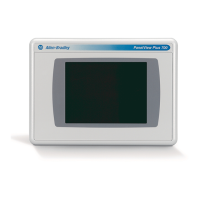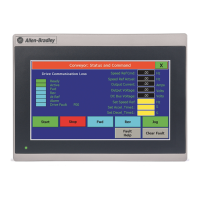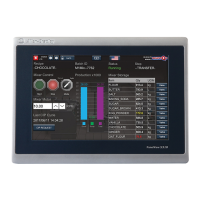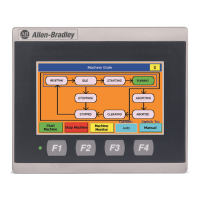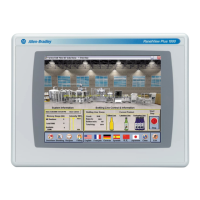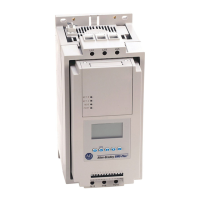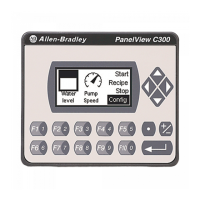220 Publication 2711P-UM001I-EN-P - December 2008
Chapter 9 Troubleshoot the System
Isolate Problems with the Keyboard
The table provides tips to help you resolve problems with the
keyboard.
Potential Problems Recommended Action
The keyboard does not work. Check the USB cable and connector. Detach and
reattach the keyboard. Verify a good connection.
Cycle power to the terminal.
Keyboard keys may not be enabled as
expected.
Check for enabled Alt-Ctrl keys.
• Enter Configuration mode and select Terminal
Settings>Input Devices>Keyboard.
The keyboard is not accepting key input. Check the key input using the keypad.
• If the keypad works, but the keyboard does not,
then the keyboard driver or keyboard is not
working.
• If both the keypad and keyboard are not working,
then the problem is probably with the
application.
On PanelView Plus CE terminals, problems
with keyboard input may be the fault of the
application.
On PanelView Plus CE terminals only:
• Press a key outside the application such as an
edit box in the shell. If the keypad input works
outside the application, then the application is at
fault.
• Press Ctrl+Esc simultaneously to open the Start
menu, cursor to run, type numbers and viewable
characters into the Run dialog.
The keyboard is a keyboard/mouse USB
composite device.
Attach a standalone USB keyboard.
The USB keyboard may not be a compliant
device.
Replace the USB keyboard. Try a different model or
manufacturer. If a new keyboard resolves the
problem, then the old keyboard was probably
noncompliant.
Refer to Appendix B for a list of valid USB devices
that are compatible with the terminal.
You can also check the Knowledgebase at the
http://support.rockwellautomation.com
site for a list
of USB devices that are compatible with the
terminal.

